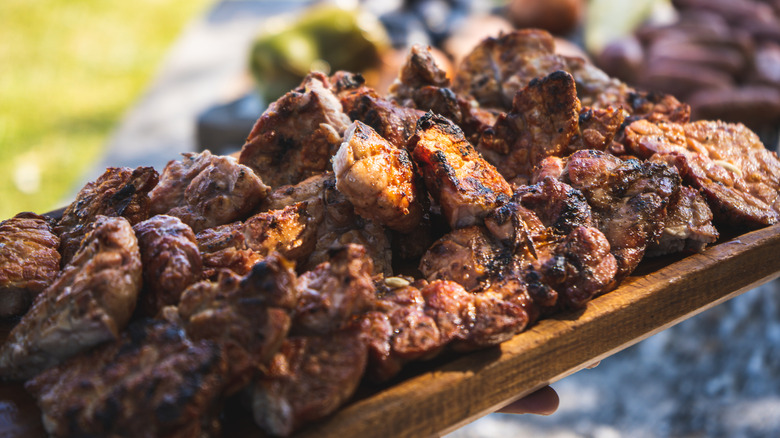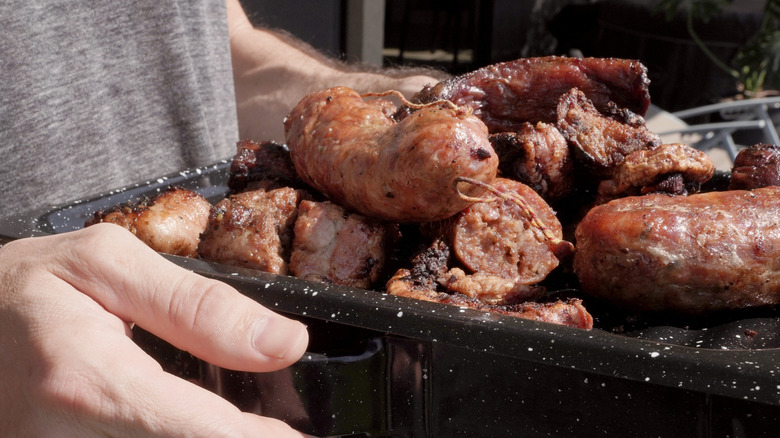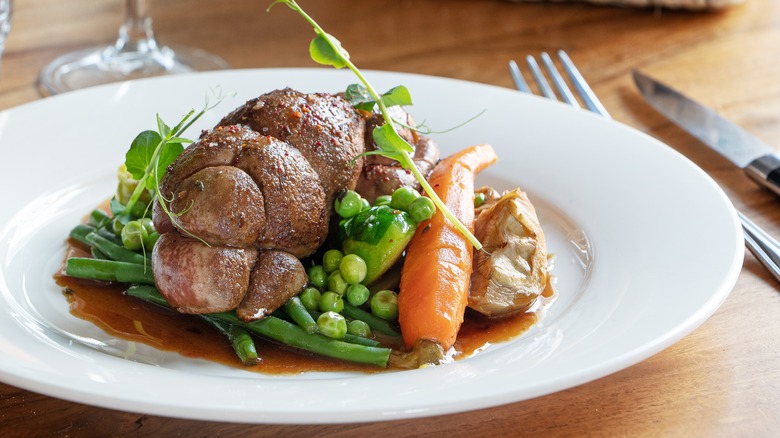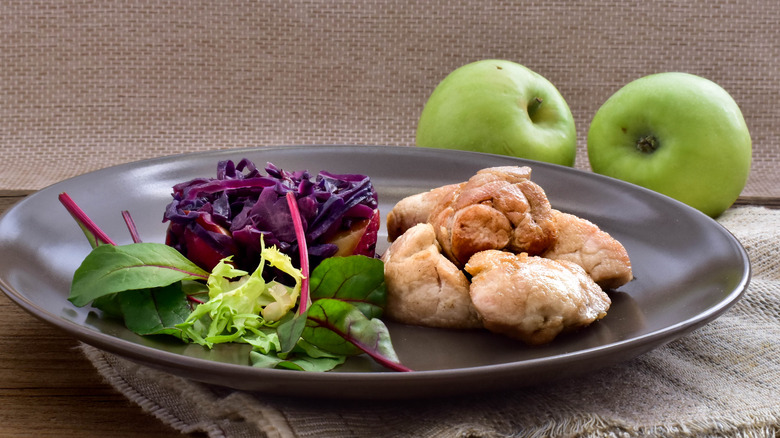Sweetbreads Are Neither Sweet Nor Bread
The first thing people may think of when they hear the term "sweetbreads" is, perhaps, the Mexican dessert known as pan dulce, which translates to "sweet breads." But the two foods couldn't be more different. Despite its name, sweetbreads have nothing to do with bread nor would they be described as sweet. They are actually a type of offal, or organ meat, that most commonly comes from veal or lamb when found on a restaurant menu.
For a long time, sweetbreads were considered prize meat for professional chefs, but home cooks and gourmands have also become privy to the delicate flavor of the rare dish. It isn't common to find them in restaurants, and it's even more uncommon to see them in markets and grocery stores. This is partly what makes them so desirable. In addition, the organ is only present in the animals for a brief period, so there is a limit on the harvest time. With a misleading name and a tendency to disappear entirely, sweetbreads are, indeed, a very mysterious ingredient, but one that many people love.
What are sweetbreads and how do they taste?
Sweetbreads are the thymus glands and pancreas organs of calves, lambs, and pigs. They are a creamy, pale pink color and are either round or elongated. Thymus glands are present in the throats of young animals to help their bodies fight off potential diseases but eventually go away after about six months. The practice of eating them likely came from the practice of using every bit of an animal for food, leaving nothing to waste. While this trend has become more common in the United States in recent decades, other parts of the world have been doing this for centuries. The gland is pretty tiny in both calves and lambs, and each animal only has one set, adding to the rarity of the ingredient.
When they are prepared properly, sweetbreads have a mild flavor and almost creamy texture. Whether they're fried, sauteed, roasted, or grilled, they should be tender, smooth, and never dry. They tend to shine when the outside is cooked well, as it crisps up nicely, giving a pleasant texture contrast to the soft interior. Sweetbreads are usually cut into bite-sized pieces before they are cooked and eaten, and can be served with all kinds of vegetables and sauces, even buffalo sauce. The name "sweetbreads" could come from the fact that the meat is so much milder than the other meat that comes from the animals but is not necessarily sweet.
Prepping is a must before cooking
Sweetbreads take quite a bit of preparation before they can be eaten or even cooked. The first rule in preparing sweetbreads is that they must be soaked for at least three hours in cold water or milk to flush out any impurities in the organ. This may also aid in the meat's mild flavor that doesn't have any "gamey" flavor like other organ meat. Changing the soaking water a few times is also a good idea, especially if you are leaving them to soak overnight in the refrigerator. After the soaking process, they need to be blanched, or placed in boiling water for a short period, followed by a dunk in ice water to stop the cooking process. This step helps make the texture nice and firm (but not tough).
At this point, there will probably be unsightly grisly bits and veins that you can gently remove from the sweetbreads. Many times, the meat is then pressed so that it is even in thickness, but this is completely optional, and they are otherwise ready to be cooked. They are also surprisingly easy to cook as the cooking time is typically brief, and they don't overcook easily. Because they are so prized, chefs often like to showcase them as "stars of the dish," but sweetbreads are also sometimes utilized in pates and sausages.
Where you can find sweetbreads
Sweetbreads are hardly a common dish to see on restaurant menus like, for instance, steak, salmon, and chicken. If they are offered, it's often as a special. Needless to say, if you are at a reputable or favorite eatery and spot them on the menu, try them. Many global regions are familiar with cooking sweetbreads, but they are particularly popular in France and Germany, so look for them at these types of restaurants. You also might find them in Italian, Mediterranean, Middle Eastern, Argentinian, and (increasingly) American restaurants.
While it's not easy tracking down sweetbreads in stores (well-stocked markets may sell them frozen), it's never been easier to find them online from specialty meat purveyors. Some butcher shops may have them as well, but you may need to pre-order them as such organ meat might not be put on display since they are not as well known as other types of meats. Companies like D'Artagnan that specialize in gourmet ingredients also might be a good resource in finding sweetbreads.
High in nutrients, but enjoy in moderation
According to Healthline, offal meats contain plenty of nutrients, including iron, protein, and B vitamins, and these include sweetbreads. U.S. Wellness Meats explains that a four-ounce portion of beef sweetbreads contains 14 grams of protein, 64% of the recommended daily value (DV) of antioxidant-rich vitamin C, 13% DV of iron, and 10% DV of vitamin B-6, which promotes the growth of red blood cells. In addition, sweetbreads contain vitamins A, E, and K, magnesium, and a good amount of potassium.
While the vitamin and mineral values are good, sweetbreads should be enjoyed in moderation because they are considered meat that's high in fat; in the same four-ounce portion, there are 267 calories and 23 grams of fat. They also contain purines which, when broken down by the body, turn into uric acid, which can promote gout.





